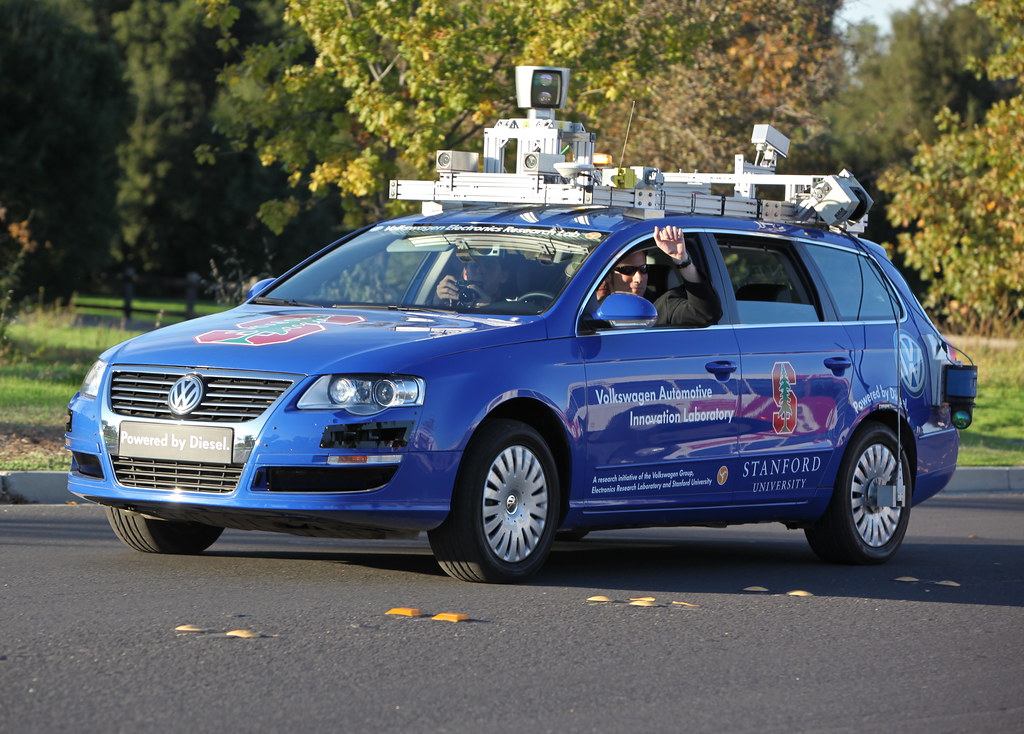Every so often, a vehicle emerges from the production line that appears to defy its own era, looking as though it was conceived by minds peering far into the future. These are the cars that didn’t just meet the standards of their day; they shattered them, introducing features, designs, and engineering philosophies that would take decades to become mainstream. They were, in essence, time travelers on four wheels, offering a glimpse into what automotive excellence would eventually become.
Such machines often carry a mixed legacy, sometimes misunderstood or underappreciated during their initial run. Their radical approaches could be too unconventional for the prevailing market, leading to initial commercial struggles or niche appeal. Yet, in retrospect, these vintage marvels stand as testament to daring innovation, proving that true progress in the automotive world often begins with the models that chose to lead rather than follow established paths.
In this comprehensive analysis, we embark on a journey through automotive history, revisiting some of the most influential and forward-thinking classic cars. This first section highlights seven trailblazers whose pioneering efforts in design, suspension, and fundamental engineering laid the groundwork for future generations, challenging conventions and expanding the very definition of what a car could be.
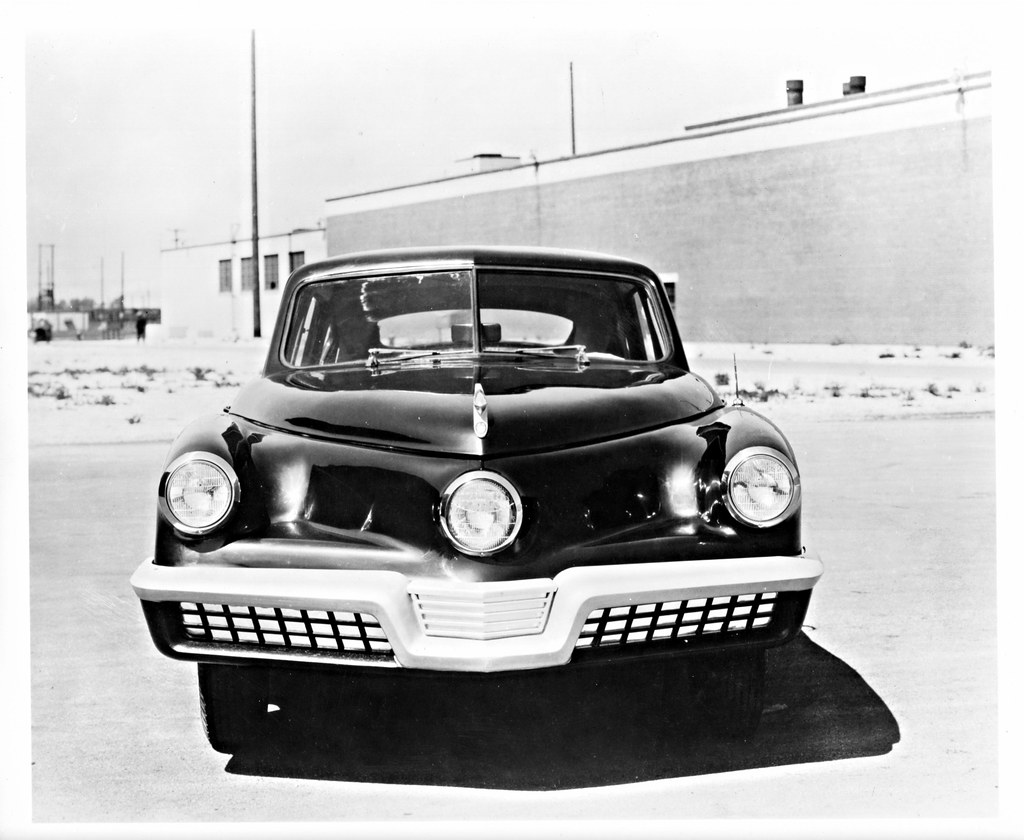
1. **Tucker 48: A Vision of Future Automotive Safety and Style**
The Tucker 48, upon its introduction, presented a mesmerizing futuristic design that felt like something extracted directly from a science fiction narrative. This vehicle was not merely an aesthetic departure; it was a marvel of its time, showcasing a profound commitment to innovative engineering and occupant safety. Preston Tucker’s vision was audacious, aiming to fundamentally rethink the automobile from the ground up.
A standout feature was the central directional headlight, an innovation designed to turn with the steering wheel, illuminating the path around corners—a concept far ahead of its contemporaries. Beyond this distinctive lighting, the Tucker 48 incorporated numerous safety advancements, many of which would only become common decades later. These included a padded dashboard, a pop-out safety glass windshield, and a reinforced chassis, all aimed at enhancing passenger protection.
The Tucker 48 stood as a testament to what visionary thinking could achieve, even if the world at large wasn’t quite ready to fully embrace its radical departures. Its impact, though initially limited by production challenges and external pressures, solidified its place as an icon of unfulfilled potential and groundbreaking innovation, influencing future automotive safety and design principles.
Read more about: Timeless Automotive Icons: 10 Cars From the 1940s That Still Command Attention Today
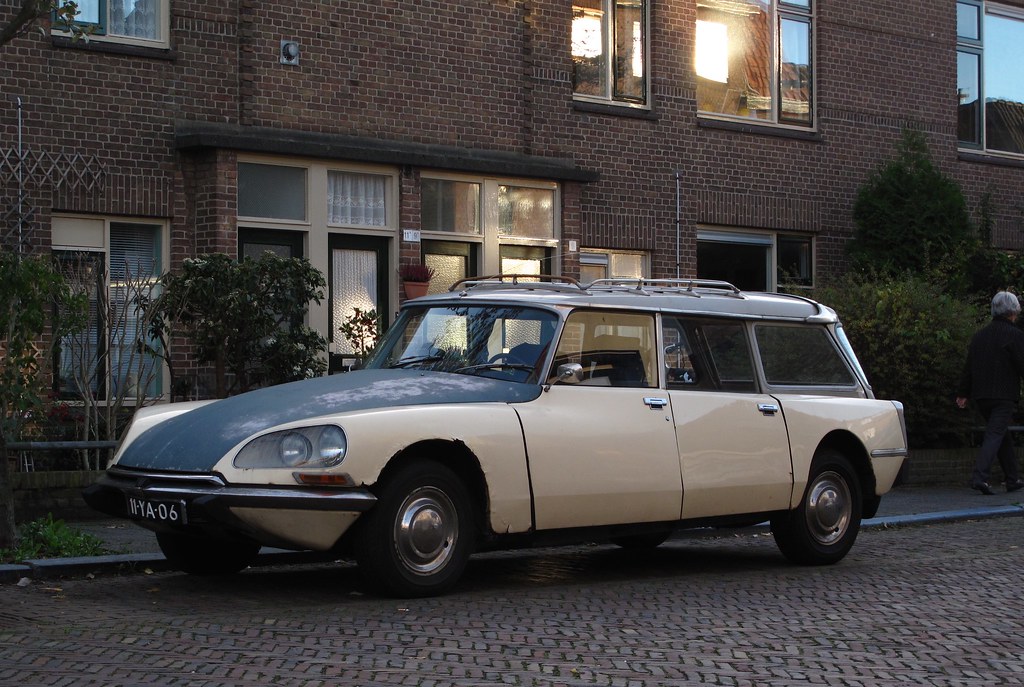
2. **Citroën DS: The Hydropneumatic Masterpiece**
The 1955 Citroën DS was a genuine masterpiece of automotive innovation, embodying an unparalleled blend of elegance and advanced technology that captivated all who encountered it. Its sleek lines and futuristic dashboard presented a design akin to a spaceship that had gracefully landed on Earth, setting it apart visually from virtually every other vehicle on the road at the time. This car was a harmonious combination of art and scientific engineering.
Central to the DS’s groundbreaking capabilities was its hydropneumatic suspension system, which delivered a ride quality described as smooth as gliding on silk. This system not only provided exceptional comfort but also offered adjustable ground clearance, a feature that was revolutionary for the era. Complementing this, the DS also integrated power-assisted steering, modern disc brakes, and an innovative semi-automatic transmission, pushing the boundaries of automotive control and convenience.
The aerodynamic design of the DS was a result of meticulous engineering, contributing to both its distinctive aesthetic and its superior performance characteristics. Unlike anything else available, its integrated approach to advanced features and stunning form established a new paradigm for automotive aspirations. This pioneering vehicle showcased a bold vision of what automobiles could aspire to be, profoundly influencing subsequent design and engineering philosophies within the industry.
Read more about: Icons of the Asphalt: 14 Classic Cars from the 1960s That Defined a Golden Era of Automotive Excellence
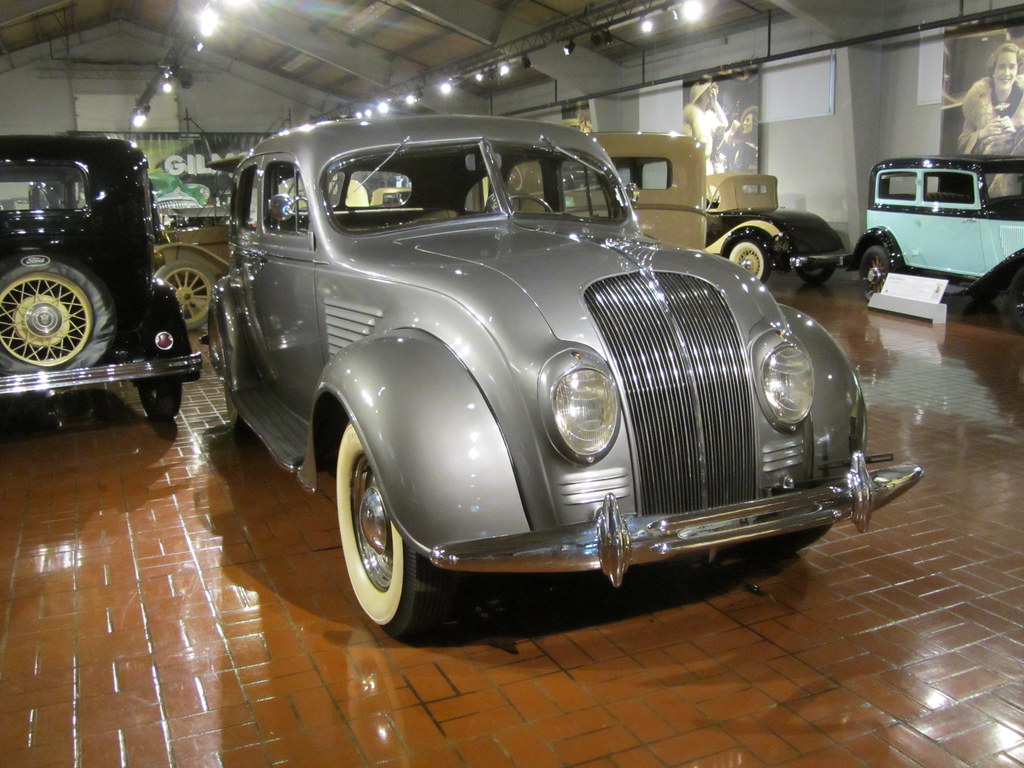
3. **Chrysler Airflow: Aerodynamics Redefined for the Masses**
The 1934 Chrysler Airflow marked a significant departure from conventional automotive design, boldly embracing aerodynamic principles at a time when most cars still resembled upright, box-like structures. Its distinctive, rounded curves and integrated bodywork seemed to whisper secrets of a more efficient and modern future, challenging the prevailing design norms of its era. This car was revolutionary for its forward-thinking approach to reducing drag and enhancing performance.
Developed through extensive wind tunnel testing, a practice still in its infancy for car design, the Airflow introduced innovations like a unibody construction. This not only increased structural integrity and safety but also contributed to a more integrated and streamlined appearance. The advanced aerodynamic profile directly reduced drag and improved fuel efficiency, tangible benefits that were largely overlooked by a market accustomed to traditional aesthetics.
Powered by an inline-eight engine producing up to 122 horsepower, and offering a notably smooth ride thanks to its advanced suspension system, the Airflow exemplified a daring to envision a better way. Despite its initially mixed reception, it undeniably paved the way for modern car designs, proving that sometimes being different is precisely what the world needs to advance.

4. **Cord 810/812: Front-Wheel Drive and Distinctive Styling**
In an automotive landscape dominated by conventional designs and rear-wheel-drive configurations, the Cord 810/812 stood defiantly apart with its bold styling and radical engineering. It offered a compelling glimpse into a future where automobiles dared to challenge established norms, embracing aesthetics and mechanical layouts that were far ahead of their time. The Cord represented a significant break from tradition, capturing attention with its unique presence.
Among its most significant innovations was the implementation of front-wheel drive, a feature that was exceptionally rare for a production car in its era. This, combined with an elegant, low-slung body, contributed to a distinct profile and improved handling characteristics. The Cord also featured hidden headlights, a design flourish that added to its sleek, uncluttered appearance and further emphasized its futuristic appeal, challenging the standards of its day.
These groundbreaking features collectively made the Cord a standout in a sea of visual and mechanical sameness, demonstrating the possibilities when imagination was allowed to dictate the engineering and styling direction. It showed the world what was achievable when designers and engineers were empowered to push boundaries, leaving an indelible mark on automotive history for its daring spirit.

5. **Oldsmobile Toronado: American Front-Wheel Drive Reimagined**
The 1966 Oldsmobile Toronado arrived as a powerful presence that felt like stepping into a time machine, offering a smooth ride that was unforgettable for its era. This vehicle represented a truly revolutionary move within the American automotive industry, as it was one of the first domestic cars to feature front-wheel drive since the pioneering Cord 810 of the 1930s. Oldsmobile boldly cast aside convention, aiming for an entirely new driving experience.
Engineered as a 385-horsepower beast, the Toronado drove unlike anything else available, pushing the boundaries of what a large American coupe could achieve in terms of power delivery and handling. Its design was equally audacious: wide, futuristic, and distinguished by a flat floor that enhanced interior space and comfort, along with innovative hidden headlights that contributed to its clean, modern fascia.
Thanks to its front-wheel-drive layout, the Toronado demonstrated superior handling on various road conditions, particularly excelling on winter roads—a significant advantage over the predominantly rear-wheel-drive muscle cars of the period. This unique design and engineering approach made every drive feel like a special occasion, serving as a powerful reminder of how daring ideas can lead to substantial advancements in luxury and innovation.
Car Model Information: 1966 Oldsmobile Toronado XS
Name: Oldsmobile Toronado
Caption: 1966 Toronado
Manufacturer: Oldsmobile
Production: 1965–1992
ModelYears: 1966–1992
Class: Full-size,personal luxury car
BodyStyle: coupe
Platform: GM E platform
Layout: FF layout
Related: Cadillac Eldorado,Buick Riviera
Categories: 1960s cars, 1970s cars, 1980s cars, 1990s cars, All Wikipedia articles written in American English
Summary: The Oldsmobile Toronado is a personal luxury car manufactured and marketed by the Oldsmobile division of General Motors from 1966 to 1992 over four generations. The Toronado was noted for its transaxle version of GM’s Turbo-Hydramatic transmission, making it the first U.S.-produced front-wheel drive automobile since the demise of the Cord 810/812 in 1937. The Toronado used the GM E platform introduced by the rear-wheel drive Buick Riviera in 1963 and adopted for the front-wheel drive 1967 Cadillac Eldorado. The three models shared the E platform for most of the Toronado’s 26-year history.
Get more information about: Oldsmobile Toronado
Buying a high-performing used car >>>
Brand: Oldsmobile Model: Toronado
Price: $11,000 Mileage: 98,358 mi.

6. **Studebaker Avanti: Fiberglass, Form, and Forced Induction**
The 1962 Studebaker Avanti was a bold declaration in automotive design, akin to a piece of modern art meticulously sculpted onto wheels. With its innovative fiberglass body and strikingly aerodynamic shape, it presented a clear vision of the future, setting it apart from the more conventional steel-bodied cars of its time. This material choice was revolutionary, contributing to reduced weight and improved performance characteristics.
Beneath its avant-garde exterior, the Avanti was equally progressive. It could be equipped with a supercharged 4.7-liter V8 engine, producing up to 289 horsepower, an impressive figure that placed it squarely in the performance elite. Furthermore, it featured disc brakes, which were a rare and advanced safety feature for production vehicles in the early 1960s, significantly enhancing its stopping power and overall driving dynamics.
This vehicle was fundamentally designed to break the mold, offering a fresh perspective on what an automobile could embody in terms of aesthetics and engineering prowess. The Avanti was not merely a car but a comprehensive experience, lauded as a true trailblazer in the automotive world for its combination of advanced materials, forced induction, and enhanced safety features.
Car Model Information: 1962 Studebaker Avanti R1
Name: Studebaker Avanti
Caption: 1962 Studebaker Avanti
Manufacturer: Studebaker
Aka: Avanti
Production: 1962: 1,200;
Assembly: Studebaker Corporation#Studebaker Factories,South Bend, Indiana
Predecessor: Studebaker Gran Turismo Hawk
Class: Personal luxury car
BodyStyle: coupe
Layout: FR layout
Engine: 289 CID
Abbr: on
Transmission: Manual transmission
Wheelbase: 109 in
Length: 192.4 in
Width: 70.3 in
Height: 53.8 in
Weight: 3095 lb
Related: Studebaker Lark
Designer: Raymond Loewy#Avanti
Categories: All articles with incomplete citations, Articles with incomplete citations from September 2018, Articles with short description, CS1 errors: missing title, Cars discontinued in 1962
Summary: The Studebaker Avanti is a personal luxury coupe manufactured and marketed by Studebaker Corporation between June 1962 and December 1963. A halo car for the maker, it was marketed as “America’s only four-passenger high-performance personal car.” Described as “one of the more significant milestones of the postwar industry”, the Raymond Loewy-designed car offered safety features and high-speed performance. Called “the fastest production car in the world” upon its introduction, a modified Avanti reached over 170 mph (270 km/h) with its supercharged 289-cubic-inch (4,740 cm3) R3 engine at the Bonneville Salt Flats. In all, it broke 29 world speed records at the Bonneville Salt Flats. Following Studebaker’s discontinuation of the model, a succession of five ventures manufactured and marketed derivatives of the Avanti model through 2006. These ventures licensed intellectual property and, in some cases procured parts, through arrangements with the successors to the Studebaker assets.
Get more information about: Studebaker Avanti
Buying a high-performing used car >>>
Brand: Studebaker Model: Avanti
Price: $17,500 Mileage: 0 mi.
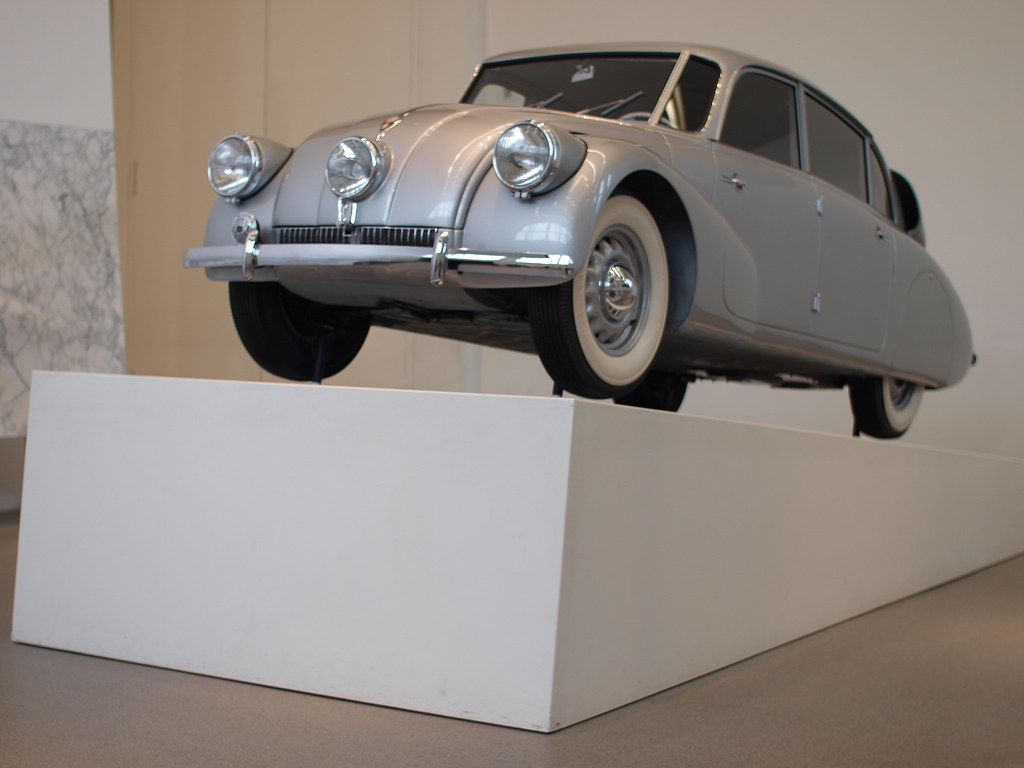
7. **Tatra 77: Aerodynamic Excellence from Eastern Europe**
The Tatra 77, a marvel of engineering from the 1930s, showcased a design philosophy radically different from its contemporaries, with its distinctive rear-mounted engine and highly aerodynamic shape. These features made it utterly unique on the road, prompting observers to consider it a true journey into the future of automotive design and functionality. The approach to its construction reflected an unwavering commitment to efficiency and innovative packaging.
Driving the Tatra 77 was an experience defined by its remarkably smooth handling, a direct benefit of its unique chassis and weight distribution. The meticulously crafted design minimized drag, making it a precursor to modern aerodynamic principles that would only gain widespread acceptance decades later. This vehicle was more than a mere mode of transport; it was a testament to the pursuit of engineering excellence.
The Tatra 77’s lasting legacy lies in its profound influence on subsequent aerodynamic and rear-engine vehicle designs. Every aspect of its engineering and design spoke of innovation and a pioneering spirit, encapsulating an adventure in automotive foresight that profoundly shaped the understanding of vehicle dynamics and efficiency long before the mainstream caught up. It remains a celebrated example of visionary automotive thought.
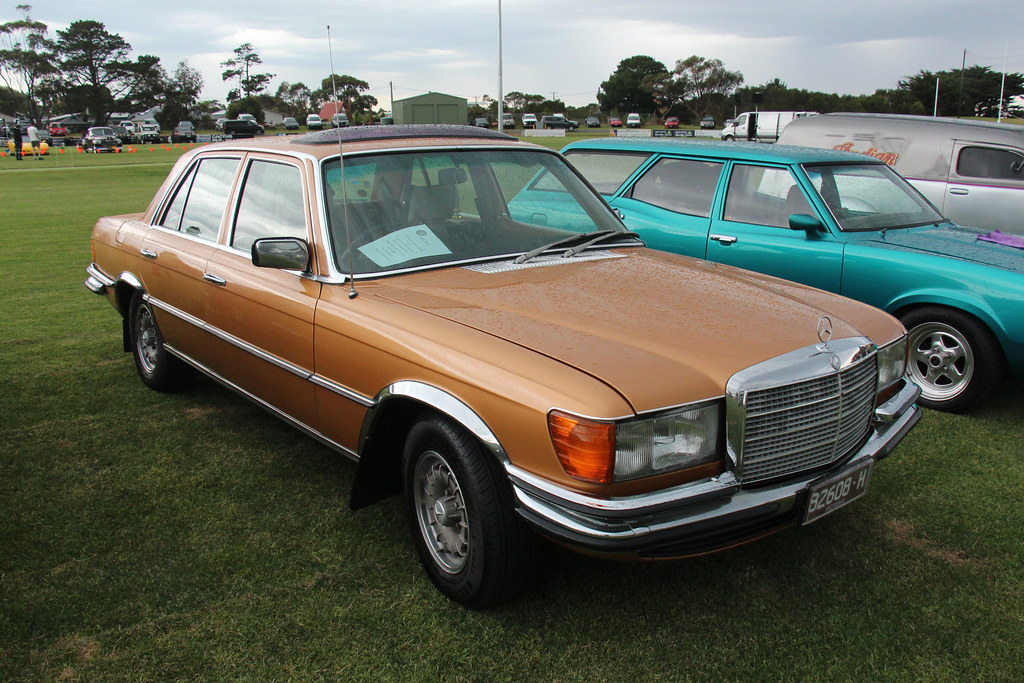
8. **1975 Mercedes-Benz 450SE – The First Car with ABS**
Mercedes didn’t invent safety, but they certainly perfected it. In 1973, the Mercedes-Benz 450SE, a flagship of the S-Class, introduced a revolutionary safety feature that would eventually become an industry standard: anti-lock brakes (ABS). This wasn’t merely an optional extra; it was a profound statement about the future of automotive safety, arriving decades before most vehicles would offer such advanced stopping capabilities. The integration of ABS into a production car like the 450SE demonstrated an unwavering commitment to occupant protection, setting a new benchmark for what was possible in vehicle dynamics.
The anti-lock braking system in the 450SE was a sophisticated piece of engineering designed to prevent the wheels from locking up during hard braking. This allowed the driver to maintain steering control, even in emergency stopping situations, significantly reducing the risk of skidding and improving overall vehicle stability. For its era, this technology was nothing short of astonishing, transforming the nature of vehicle control under duress. It represented a crucial step forward from conventional braking systems, where sudden stops often led to uncontrolled slides and potential accidents.
Far from being an “econo-box,” the 450SE was a stately sedan, exuding luxury and performance. Its adoption of ABS highlighted Mercedes-Benz’s philosophy that safety innovations should be integrated into high-performance, high-luxury vehicles, proving that cutting-edge safety didn’t equate to sacrificing sophistication or driving pleasure. This groundbreaking inclusion underscored a belief that intelligent engineering could elevate both the driving experience and passenger security simultaneously. Today, ABS is so ubiquitous that its pioneering debut in the 450SE is often overlooked, yet its impact on automotive safety is immeasurable, defining an era of smart, proactive vehicle protection.
Read more about: The Smart Money’s Secret: 8 Undervalued Classic Cars Experts Say Are Poised for Significant Appreciation

9. **1984 Dodge Caravan – The First True Minivan**
In a remarkable moment of foresight, Dodge identified a critical unmet need in the American family market that no one else had truly grasped: the desire for space and efficiency without the cumbersome size of traditional land yachts. The 1984 Dodge Caravan, alongside its Plymouth Voyager sibling, wasn’t just another new model; it was a quiet revolution that profoundly reshaped the automotive landscape. This vehicle wasn’t about screaming performance or audacious styling, but about offering unparalleled practicality and versatility in a compact, manageable package.
What made the Caravan revolutionary was its fundamental design philosophy. Built on a front-wheel-drive, car-based platform, it offered a significantly lighter and easier-to-drive experience than the full-size vans or station wagons it aimed to replace. Its clever interior packaging provided enormous cargo space and flexible seating arrangements within a relatively small footprint, a concept that was genuinely groundbreaking. Families suddenly had a vehicle that could comfortably transport multiple children, groceries, and gear, all while being far more maneuverable and fuel-efficient than anything comparable on the market.
While the Caravan might have “threw a rod with 74k miles” in one anecdotal account, its overarching impact was undeniable and transformative. It wasn’t about raw power, but rather the sheer brilliance of its concept and execution. Chrysler’s front-wheel-drive, car-based minivan launched an entirely new segment, fundamentally changing American roads forever and setting the blueprint for what a multi-purpose family vehicle could, and should, be. Its legacy is not just one of a successful model, but of creating an entirely new category that catered directly to the evolving needs of modern families.
Car Model Information: 2011 Dodge Grand Caravan SE
Caption: 2011 Dodge Grand Caravan Mainstreet
Name: Dodge Grand Caravan
Manufacturer: Chrysler Corporation,Daimler AG,Chrysler LLC,Chrysler Group LLC,FCA US LLC
Class: Minivan
Layout: FF layout,F4 layout
Production: November 2, 1983 –August 21, 2020
ModelYears: 1984–2020
Related: Plymouth Voyager,Chrysler Town & Country (minivan),Dodge Mini Ram,Chrysler Voyager,Volkswagen Routan
Assembly: Windsor, Ontario,Fenton, Missouri,Fenton, Missouri,Fuzhou
Successor: Dodge Journey,Chrysler Voyager
Categories: All-wheel-drive vehicles, All articles with unsourced statements, Articles with short description, Articles with unsourced statements from December 2017, Articles with unsourced statements from May 2009
Summary: The Dodge Caravan is a series of minivans manufactured by Chrysler from the 1984 through 2020 model years. The Dodge version of the Chrysler minivans, was marketed as both a passenger van and a cargo van (the only version of the model line offered in the latter configuration). For 1987, the model line was joined by the long-wheelbase Dodge Grand Caravan. Produced in five generations across 36 model years, the Dodge Caravan is the second longest-lived Dodge nameplate (exceeded only by the Dodge Charger). Initially marketed as the Dodge counterpart of the Plymouth Voyager, the Caravan was later slotted between the Voyager and the Chrysler Town & Country. Following the demise of Plymouth, the model line became the lowest-price Chrysler minivan, ultimately slotted below the Chrysler Pacifica. Sold primarily in the United States and Canada, the Dodge Caravan was also marketed in Europe and other international markets under the Chrysler brand (as the Chrysler Voyager or Chrysler Caravan). From 2008 onward, Dodge marketed the model line only as the Grand Caravan; Ram Trucks sold a cargo-only version of the model line as the Ram C/V Tradesman. The model line was also rebranded as the Volkswagen Routan from 2009 through 2014. After the 2020 model year, the Dodge Grand Caravan was discontinued, ending production on August 21, 2020. For 2021 production, the Grand Caravan nameplate was moved to Chrysler, which used it for a Canadian-market version of the Chrysler Pacifica (in the United States, the exact vehicle was marketed as the Chrysler Voyager). For its entire production run, the Dodge Caravan/Grand Caravan was manufactured by Chrysler Canada (now Stellantis Canada) at its Windsor Assembly facility (Windsor, Ontario). From 1987 until 2007, the model line was also manufactured by Chrysler at its Saint Louis Assembly facility (Fenton, Missouri). Since their introduction in late 1983, over 14.6 million Chrysler minivans have been sold worldwide (including export versions and versions sold through rebranding).
Get more information about: Dodge Caravan
Buying a high-performing used car >>>
Brand: Dodge Model: Caravan
Price: $13,971 Mileage: 74,119 mi.
Read more about: 11 SUVs That Promise Adventure But Deliver Owners Immediate Regret

10. **1991 Toyota Previa – The Minivan from Outer Space**
Just when the minivan concept seemed to settle into a predictable mold of functional yet uninspiring boxes, Toyota boldly unleashed the 1991 Previa, a vehicle that looked as if it had beamed down from a distant galaxy. The Previa shattered conventional minivan design with its distinctly futuristic aesthetic and revolutionary engineering, offering a glimpse into what an “ideal multi-purpose vehicle” could truly embody. Its unique silhouette and design cues made it an instant standout, injecting a much-needed dose of avant-garde into a burgeoning but somewhat staid segment.
Beneath its space-age exterior lay an equally innovative mechanical layout: a mid-engine, rear-drive configuration. This choice was virtually unheard of for a family hauler, contributing to a lower center of gravity and excellent balance, which translated into surprisingly agile handling for its class. The engine itself, notably, was accessed not from under a traditional hood, but from under the front seats, a testament to Toyota’s daring commitment to packaging efficiency and design integration. This level of engineering boldness was simply unprecedented for a vehicle of its type.
For those who “sprung for the supercharged All-Trac model,” the Previa further pushed boundaries by offering all-wheel drive, transforming it into a remarkably capable and versatile vehicle, ready for diverse weather conditions and adventures, complete with “torque to spare.” Beyond its groundbreaking drivetrain and mid-engine layout, it also offered family-friendly luxuries like an available dual sunroof and removable seats, enhancing its practicality and appeal. The Previa was a mid-engine minivan that wasn’t just “wild engineering for a family hauler;” it was Toyota’s audacious vision of the future, arriving years before the market would fully appreciate such radical yet thoughtful innovation.
Car Model Information: 1991 Toyota Previa LE 3dr Mini Van
Name: Toyota Previa
Manufacturer: Toyota
Aka: unbulleted list
Production: January 1990 – October 2019
Class: Minivan
BodyStyle: minivan
Layout: unbulleted list
Predecessor: Toyota LiteAce#R20
Successor: unbulleted list
Categories: 2000s cars, 2010s cars, All-wheel-drive vehicles, All articles needing additional references, All articles with unsourced statements
Summary: The Toyota Previa, also known as the Toyota Estima (Japanese: トヨタ・エスティマ, Hepburn: Toyota Esutima) in Japan, and Toyota Tarago in Australia, is a minivan that was produced by Toyota from 1990 until October 2019 across three generations.
The name “Previa” is derived from the Spanish for “preview”, as Toyota saw the first Previa as a vehicle that would preview technologies used in future minivans. The Previa was the second largest minivan in Toyota’s lineup in Japan after the bigger and more luxurious Alphard/Vellfire.
Get more information about: Toyota Previa
Buying a high-performing used car >>>
Brand: Toyota Model: Previa
Price: $14,999 Mileage: 134,000 mi.
Read more about: 14 Family-Friendly Vehicles That Actually Fit Three Car Seats Across: Your Ultimate Guide

11. **1999 Honda Insight – First Hybrid Sold in the U.S.**
While popular discourse often credits the Prius with pioneering the hybrid movement in America, it was, in fact, the 1999 Honda Insight that first introduced this groundbreaking technology to the U.S. market, beating its Toyota rival by a full year. This tiny two-seater was more than just an economical car; it was a bold statement about the future of propulsion, embodying a commitment to fuel efficiency and environmental consciousness that was profoundly ahead of its time. The Insight looked and felt like a concept car brought to life, hinting at an era where efficiency would be paramount.
From its distinctive fender skirts to its remarkably futuristic dashboard, the Insight’s design was purposefully crafted to maximize aerodynamic efficiency, making it instantly recognizable as a vehicle committed to pushing boundaries. Its lightweight construction, combined with its innovative hybrid powertrain, allowed it to “sip gas” and achieve extraordinary fuel economy figures, famously “over 60 MPG.” This wasn’t merely a minor improvement; it was a monumental leap forward in practical, mass-market fuel efficiency, demonstrating the viability and benefits of hybrid technology on public roads.
The hybrid powertrain in the Insight was not “just for show;” it was a meticulously engineered system that combined a small gasoline engine with an electric motor to optimize performance and efficiency. Honda didn’t just “dip a toe into the future” with this vehicle; they dove in headfirst, presenting a fully realized vision of eco-friendly personal transportation. The Insight’s legacy is that of a true pioneer, proving that mainstream vehicles could achieve exceptional efficiency without compromising on advanced technology, forever altering the automotive industry’s trajectory towards sustainable motoring.
Car Model Information: 1999 Honda Insight EX
Name: Honda Insight
Caption: Honda Insight (ZE4; 2019)
Manufacturer: Honda
Production: 1999–2006,2009–2014,2018–2022
ModelYears: 2000–2006 , 2010–2014 , 2019–2022
Class: Subcompact car
BodyStyle: liftback
Layout: Front-engine, front-wheel-drive
Sp: us
Categories: 2010s cars, All Wikipedia articles written in American English, All articles containing potentially dated statements, All articles that may contain original research, All articles with dead external links
Summary: The Honda Insight (ホンダ・インサイト, Honda Insaito) is a hybrid electric vehicle that is manufactured and marketed by Honda. Its first generation was a two-door, two passenger liftback (1999–2006) and in its second generation was a four-door, five passenger liftback (2009–2014). In its third generation, it became a four-door sedan (2018–2022). It was Honda’s first model with Integrated Motor Assist system and the most fuel efficient gasoline-powered car available in the U.S. without plug-in capability for the length of its production run. Honda introduced the second-generation Insight in Japan in February 2009 and in the United States on March 24, 2009. The Insight was the least expensive hybrid available in the US. In December 2010, Honda introduced a less expensive base model for the 2011 model year. The Insight was launched in April 2009 in the UK as the lowest priced hybrid on the market and became the best selling hybrid for the month. The Insight ranked as the top-selling vehicle in Japan for the month of April 2009, a first for a hybrid model. During its first twelve months after first available in the Japanese market, the second-generation Insight sold 143,015 units around the world. In July 2014, Honda announced the end of production of the Insight for the 2015 model, together with the Honda FCX Clarity hydrogen fuel-cell car and the Honda Fit EV electric car. At the 2018 North American International Auto Show, Honda announced the third-generation Honda Insight prototype, based on the tenth-generation Honda Civic sedan. Unlike the previous Insight, it was a traditional sedan, not a five-door liftback. The third-generation Insight went on sale later that year. In April 2022, Honda announced that the Insight would be discontinued after the 2022 model year, with production ending in June. It has been replaced by a new Civic Hybrid.
Get more information about: Honda Insight
Buying a high-performing used car >>>
Brand: Honda Model: Insight
Price: $21,900 Mileage: 47,158 mi.
Read more about: The Ultimate Guide to 2024’s Most Dependable Cars: Why These Top Picks Are Driving Off Dealership Lots
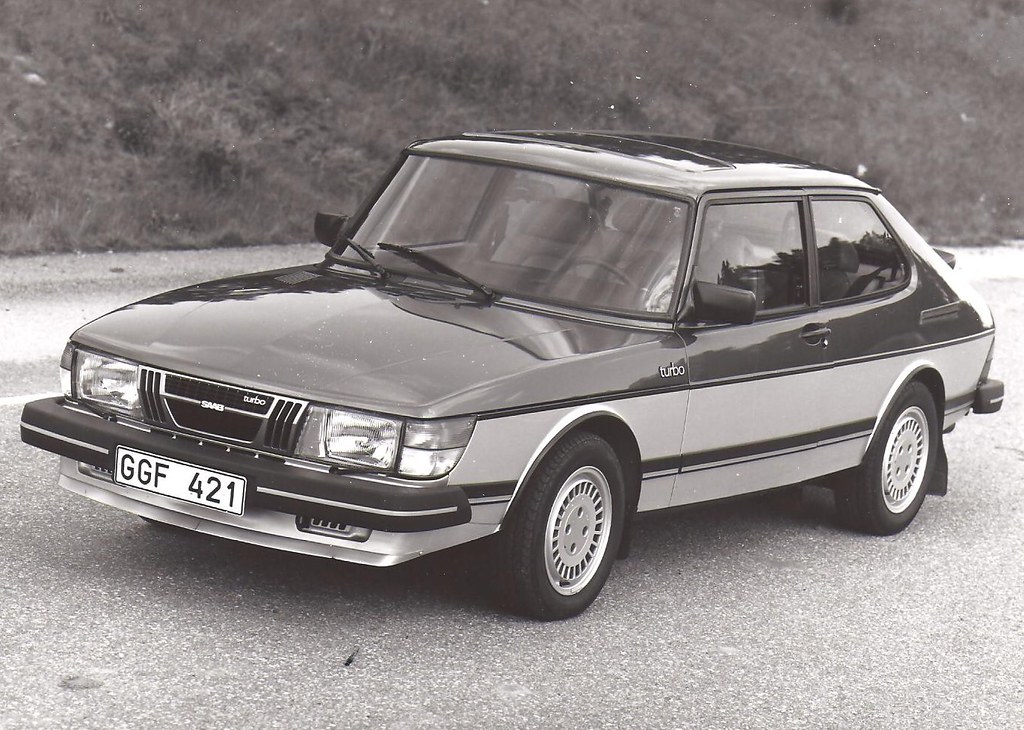
12. **1980 Saab 900 Turbo – Early Turbo Tech That Worked**
Turbocharging as a concept was not entirely new in 1980, but its widespread application in consumer vehicles often came with significant compromises, typically manifesting as temperamental performance and noticeable “laggy” power delivery. This is precisely where the 1980 Saab 900 Turbo carved its indelible mark on automotive history. Saab didn’t just add a turbocharger; they engineered a system that transformed turbo technology into a smooth, reliable, and genuinely usable power enhancement for the everyday driver, a true testament to their innovative spirit.
Saab’s approach delivered “smooth, reliable boost” that made their distinctive hatchback “punch way above its weight,” offering exhilarating performance that belied its unassuming appearance. Unlike many of its contemporaries, the 900 Turbo managed to harness forced induction without the typical drawbacks, providing immediate and consistent power delivery that truly elevated the driving experience. This pioneering refinement of turbocharging demonstrated that high performance could be seamlessly integrated into a practical, mass-produced vehicle, challenging the prevailing notion that power had to come from larger, naturally aspirated engines.
Beyond its mechanical prowess, the 900 Turbo also possessed a unique aesthetic charm. Described as “boxy, European, and full of strange charm,” it “looked the part” of a vehicle that dared to be different. It embodied a philosophy of intelligent design and engineering, proving that “performance didn’t have to mean big engines and rear-wheel drive.” The Saab 900 Turbo was a “smart car before ‘smart car’ meant tiny and electric,” showcasing how foresight and thoughtful engineering could lead to substantial advancements in both performance and practicality, influencing future generations of turbocharged vehicles across the industry.
Car Model Information: 1980 Saab 900
Name: Saab 900
Caption: Saab 900 SE Turbo 3-door
Manufacturer: Saab-Scania,Saab Automobile
Production: 1978–1998
Assembly: Sweden:,Trollhättan,Arlöv,Malmö,Uusikaupunki
Class: Compact executive car
Layout: Front-engine, front-wheel-drive layout
Predecessor: Saab 99
Successor: Saab 9-3
Categories: 1980s cars, 1990s cars, All Wikipedia articles needing clarification, All articles needing additional references, All articles that may contain original research
Summary: The Saab 900 is a mid-sized automobile produced by Swedish manufacturer Saab from 1978 until 1998 in two generations: the first from 1978 to 1994, and the second from 1994 to 1998. The first-generation car was based on the Saab 99 chassis, though with a longer front end to meet U.S. frontal crash regulations and to make room for the turbo-charged engines, air conditioning and other equipment that was not available in the early days of the 99 model. The 900 was produced in 2- and 4-door sedan, and 3- and 5-door hatchback configurations and, from 1986, as a cabriolet (convertible) model. There were single- and twin-Zenith carburettor; fuel injected, and turbocharged engines, including Full Pressure Turbo (FPT) and, in European models during the early 1990s, Low Pressure Turbos (LPT).
Get more information about: Saab 900
Buying a high-performing used car >>>
Brand: Saab Model: 900 Turbo
Price: $35,799 Mileage: 16,241 mi.
Read more about: Unleashing the Boost: A Deep Dive into the Pioneering Turbocharged Oldsmobile Jetfire and Chevrolet Corvair

13. **1973 Buick Riviera – Touchscreen in the ‘80s? Yup.**
In an era dominated by analog buttons and mechanical dials, the 1985 Buick Riviera truly broke new ground by integrating a feature that would become commonplace decades later: a touchscreen in the dashboard. This wasn’t a conceptual prototype or a limited-run experiment; it was a production vehicle offering what Buick called the “Graphic Control Center,” a technological marvel that pre-dated the widespread adoption of smartphones and the infotainment systems found in modern luxury cars like Teslas. It represented an audacious leap into the digital age for automotive interiors.
The Graphic Control Center allowed drivers to control a multitude of functions directly from the screen, including the radio, climate control, and trip computer. For 1985, this level of integrated digital control was revolutionary, transforming the car’s interior into something akin to a “high-tech living room.” While the context acknowledges that “it was slow and a bit awkward,” its very existence was a testament to Buick’s forward-thinking approach. The question, “Do you think it supports CarPlay?” humorously underscores just how far ahead of its time this feature was, anticipating an interactive future for vehicle interfaces.
Not everyone “got it” at the time; the market wasn’t quite ready for such a radical departure from traditional controls. However, Buick was undeniably “thinking way ahead,” demonstrating a clear vision for how technology could enhance the in-car experience. The 1985 Riviera’s touchscreen serves as a powerful reminder that true innovation often begins with bold experiments, even if they initially appear cumbersome or too advanced for their contemporary audience, paving the way for the sophisticated, intuitive interfaces we now expect in every modern vehicle.
Car Model Information: 1973 Buick Riviera
Caption: 1973 Buick Riviera
Name: Buick Riviera
Predecessor: Buick Super
Manufacturer: Buick
ModelYears: 1963–1993,1995–1999
Class: Personal luxury car
Categories: 1960s cars, 1970s cars, 1980s cars, 1990s cars, All articles with specifically marked weasel-worded phrases
Summary: The Buick Riviera is a personal luxury car that was marketed by Buick from 1963 to 1999, with the exception of the 1994 model year. As General Motors’ first entry into the personal luxury car market segment, the Riviera was highly praised by automotive journalists upon its high-profile debut. It was a ground-up design on a new GM E platform debuting for the 1963 model year and was also Buick’s first unique Riviera model. Unlike its subsequent GM E platform stablemates, the Oldsmobile Toronado and Cadillac Eldorado, the Riviera was initially a front engine/rear-wheel drive platform, switching to front-wheel drive starting with the 1979 model year. While the early models stayed close to their original form, eight subsequent generations varied substantially in size and styling. A total of 1,127,261 Rivieras were produced. The Riviera name was resurrected for two concept cars that were displayed at auto shows in 2007 and in 2013.
Get more information about: Buick Riviera
Buying a high-performing used car >>>
Brand: Buick Model: Riviera
Price: $22,499 Mileage: 91,150 mi.
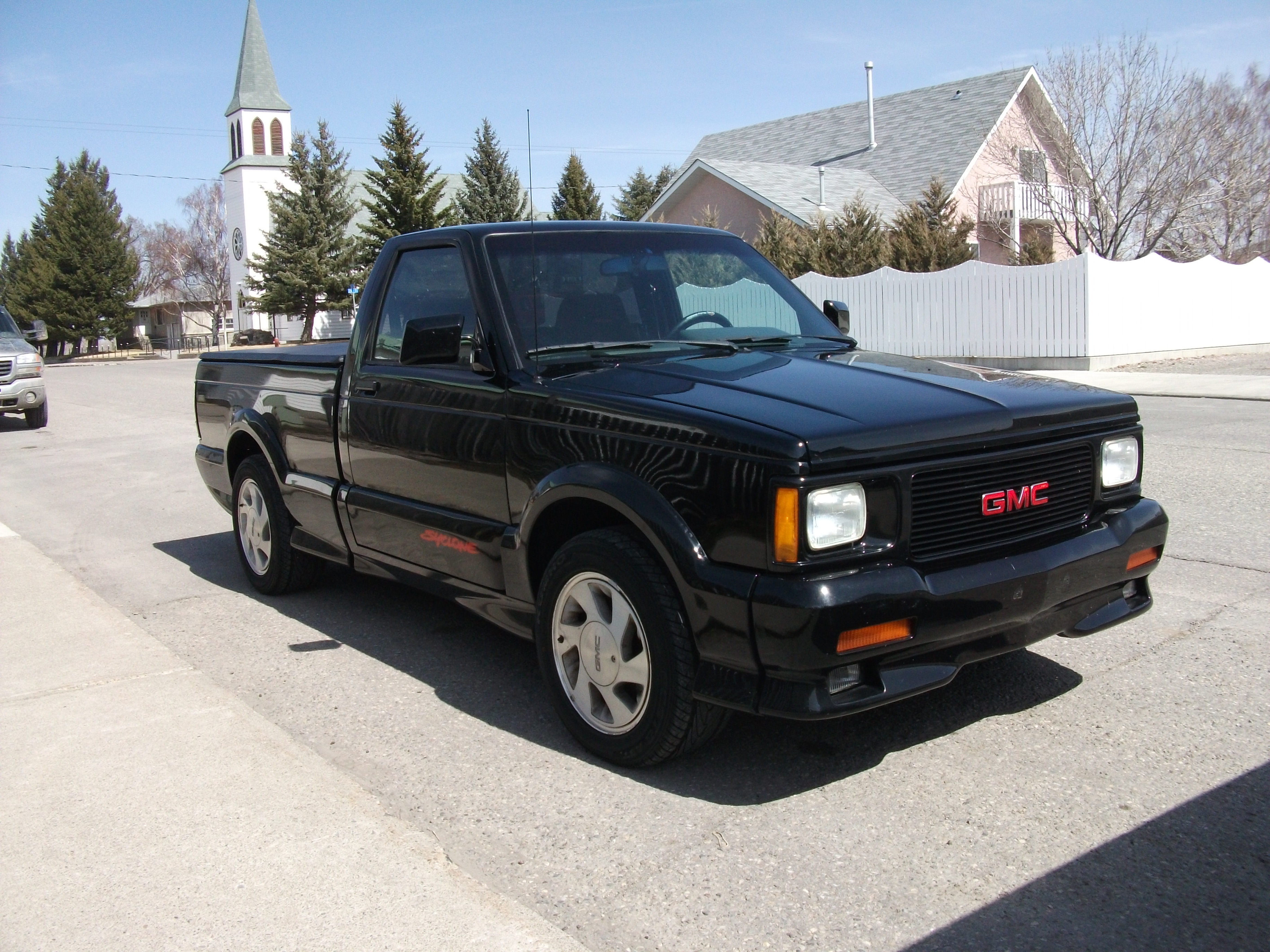
14. **1991 GMC Syclone – Pickup Truck Meets Sports Car**
In a segment traditionally defined by utility and ruggedness, the 1991 GMC Syclone emerged as a startling anomaly, a vehicle that fundamentally challenged the very definition of a pickup truck. Most people regarded pickups as workhorses, but GMC harbored “other ideas,” conceiving a machine that seamlessly blended the brute force of a sports car with the practical form factor of a light-duty truck. This wasn’t merely a performance variant; it was a groundbreaking reinterpretation of what a pickup could achieve, blurring lines that were thought to be rigidly drawn.
Underneath its aggressive, monochromatic styling, the Syclone packed a punch that astonished the automotive world. Equipped with a turbocharged V6 engine and a sophisticated all-wheel-drive system, it could accelerate from “0-60 in 4.3 seconds—quicker than a Ferrari 348.” This breathtaking performance, combined with a “sport-tuned suspension,” made it unequivocally “the world’s fastest cargo hauler.” Its ability to put power down efficiently in various conditions, thanks to its advanced drivetrain, set a new, impossibly high standard for truck performance and handling.
The Syclone left many observers bewildered, prompting questions like, “Was it a muscle car in disguise? A truck with a Corvette complex?” Regardless of how it was categorized, its impact was undeniable. It proved that a pickup truck could be a serious performance machine, capable of shaming dedicated sports cars off the line, while still retaining a degree of practicality. The GMC Syclone was not just a truck; it was a statement, a revolution in unexpected packaging that undeniably “left its mark” on automotive history, inspiring future generations of high-performance utility vehicles and showcasing the untapped potential of a hybrid concept.
Car Model Information: 1991 GMC Sonoma Syclone
Name: GMC Syclone
Production: 1991 (2,995 produced) , 1992 (3 produced)
Manufacturer: GMC (marque)
Related: GMC Typhoon,Chevrolet_S-10#Sonoma_GT,GMC Jimmy
Engine: Chevrolet 90° V6 engine#Turbocharged LB4 4.3L V6,turbocharger,V6
Transmission: Turbo-Hydramatic#THM700R4 / 4L60 / 4L60E / 4L65E / 4L70E,automatic transmission
Wheelbase: 108.3 in
Abbr: on
Length: 180.5 in
Width: 68.2 in
Height: 60.0 in
Weight: 3521 lb (1597 kg)
Layout: Front-engine, four-wheel-drive layout
Designer: Kim Neilsen, William DavisCite web
Date: Sat Apr 25 2020 17:00:00 GMT-0700 (Pacific Daylight Time)
Title: !}} International SyTy Registry
Categories: All articles needing additional references, Articles needing additional references from July 2018, Articles with short description, Cars introduced in 1991, Commons category link is on Wikidata
Summary: The GMC Syclone is a high-performance version of the GMC Sonoma pickup truck. Produced in 1991 by GMC along with Production Automotive Services (PAS)—the same company credited with building the 1989 Pontiac Turbo Trans Am—the GMC Syclone was the fastest production truck for 1991. Following the Syclone’s production, the similarly powered 1992–1993 GMC Typhoon SUV was based on the GMC Jimmy platform. Also following the Syclone, the 1992 GMC Sonoma GT truck was offered as a sport package with the looks of a Syclone but without the price and performance of its turbocharged predecessor. Only 806 Sonoma GTs were produced.
Get more information about: GMC Syclone
Buying a high-performing used car >>>
Brand: GMC Model: Syclone
Price: Not Priced Mileage: 50,412 mi.
As we conclude this journey through the annals of automotive innovation, it becomes abundantly clear that the path of progress is paved by visionaries who dared to challenge the status quo. These forgotten trailblazers, from the elegant safety of the Mercedes-Benz 450SE to the audacious hybrid promise of the Honda Insight, and the genre-bending performance of the GMC Syclone, didn’t just represent minor advancements; they were harbingers of entire new eras. They introduced concepts like ABS, the true minivan, efficient turbocharging, and intuitive touchscreens long before the mainstream caught up, fundamentally altering the blueprint for vehicle design and engineering. Their stories remind us that the most significant leaps forward in the automotive world often come from those who look beyond the horizon, crafting vehicles that are not merely modes of transport, but genuine “time machines” offering a tantalizing glimpse into tomorrow’s roads. Their legacy is a testament to the enduring power of ingenuity, proving that some classics are truly timeless because they were, in every sense, ahead of their time.





